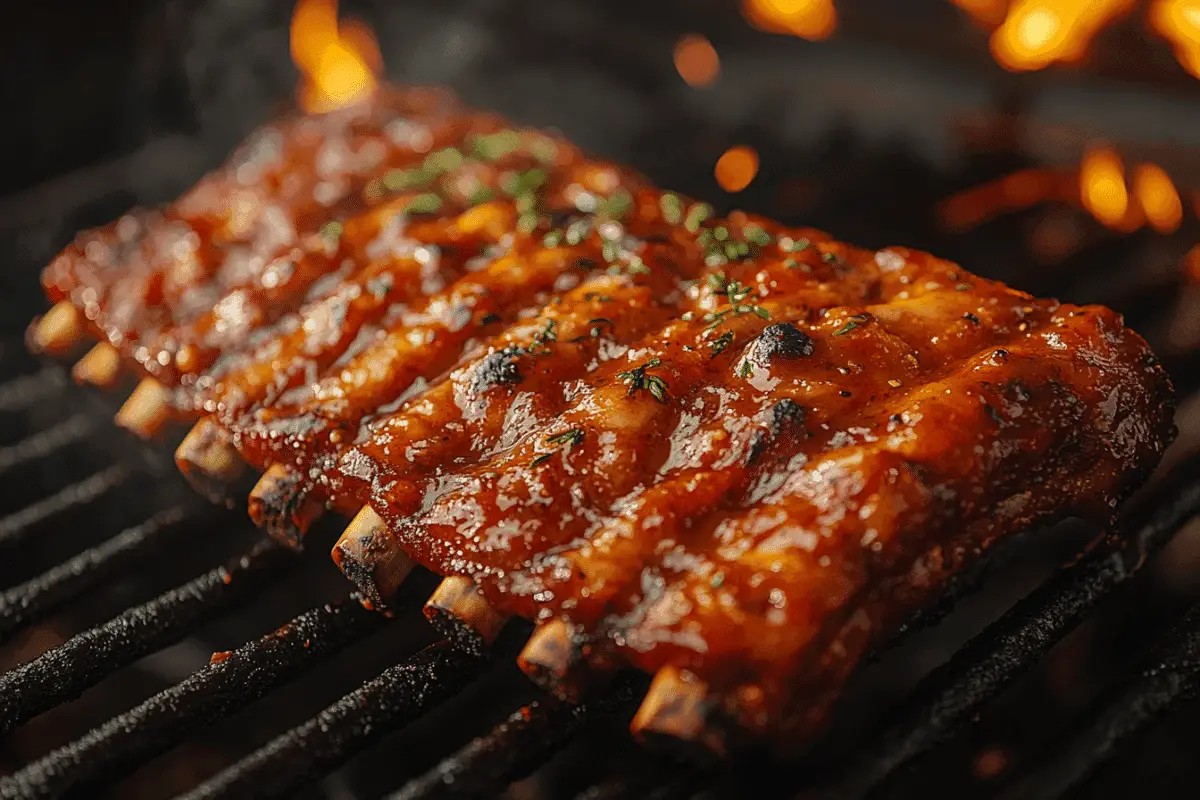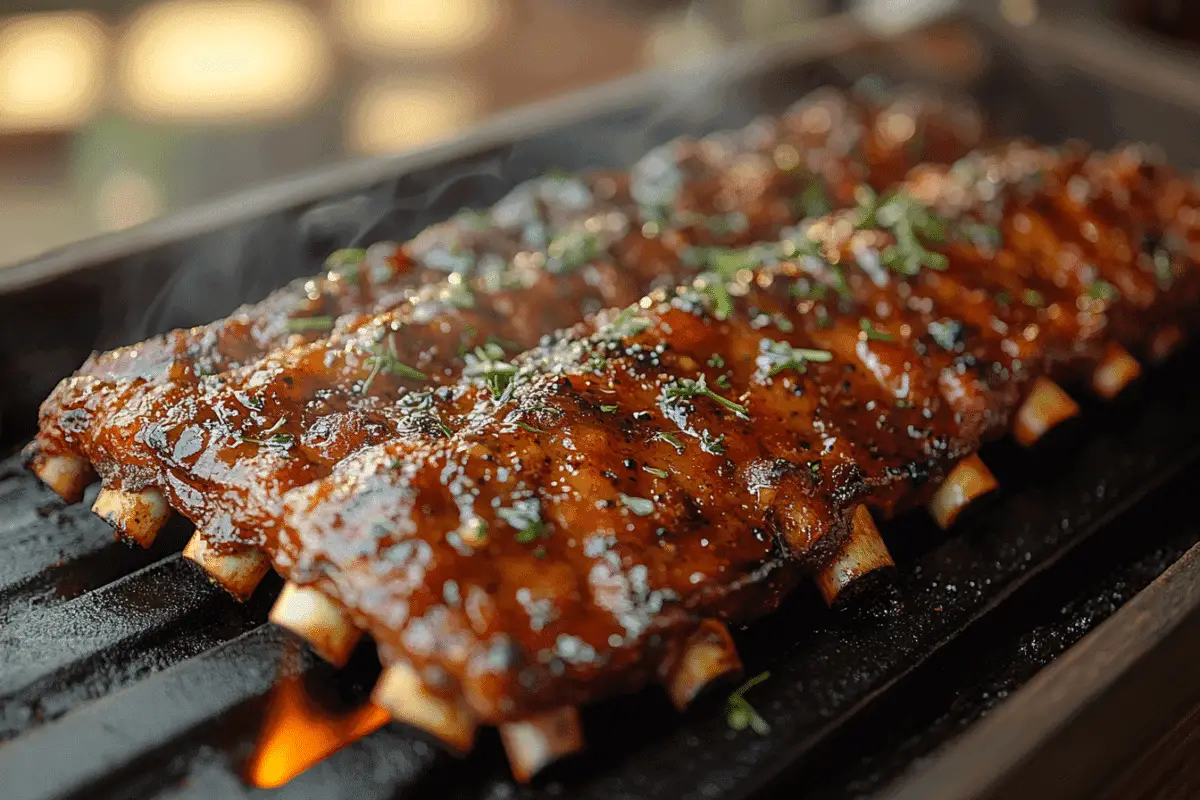
Smoking ribs is so much more than simply a cooking method; it is, in fact, a deeply rewarding culinary experience that has the power to bring out the unparalleled richness of flavors and unmatched tenderness of the meat.
Moreover, whether you are an experienced BBQ enthusiast with years of grilling behind you or just beginning to explore the art of outdoor cooking, mastering the intricacies of smoking ribs will undoubtedly elevate your culinary skills to an entirely new level.
Additionally, as you delve into this comprehensive guide, you will gain valuable insights that cover every crucial aspect of the process—from thoughtfully selecting the perfect ribs to skillfully perfecting the smoking techniques required to achieve mouthwatering results. By embracing this step-by-step approach and paying attention to every detail, you can ensure your rib-smoking journey is both enjoyable and successful, whether you’re cooking for yourself, your family, or a crowd of friends.
Selecting the Best Ribs for Smoking
Choosing the right ribs is, without question, the essential first step toward achieving truly delicious smoked ribs. In fact, the selection process plays a pivotal role in determining the final texture, flavor, and overall quality of your dish. Furthermore, among the many available options, the three most popular types of ribs—baby back ribs, spare ribs, and St. Louis-style ribs—each offer distinct characteristics that cater to different preferences. Therefore, it becomes critically important to carefully select the type that best suits your personal taste and cooking style. Moreover, understanding the unique attributes of each variety can greatly enhance your ability to make an informed decision.
For example, baby back ribs are prized for their tender meat and slightly leaner profile, while spare ribs, on the other hand, provide a richer, more robust flavor due to their higher fat content. St. Louis-style ribs, meanwhile, strike a balance with their uniform shape and moderate marbling, making them a popular choice for many pitmasters. By thoughtfully considering these differences and aligning them with your specific flavor preferences and cooking goals, you can set the foundation for a successful rib-smoking experience that is both satisfying and flavorful.
Baby back ribs are, without a doubt, highly regarded for their unparalleled tenderness and lean meat, which consistently makes them a favorite among barbecue enthusiasts. Moreover, their smaller size and curved shape allow for quicker cooking, further adding to their appeal for those seeking a more delicate and refined flavor profile. In contrast, spare ribs stand out due to their significantly meatier composition and higher fat content, which, in turn, contribute to a richer and more robust flavor when smoked. Additionally, this extra fat helps to keep the ribs moist throughout the cooking process, making them an excellent choice for those who enjoy bolder, more indulgent flavors.
On the other hand, St. Louis-style ribs, which are meticulously trimmed from spare ribs, offer their own set of advantages. Specifically, their uniform rectangular shape not only makes them visually appealing but also ensures they cook more evenly. Allowing for a consistently tender and flavorful result. Furthermore, this even cooking profile makes St. Louis-style ribs a practical option for beginners and seasoned pitmasters alike. By understanding these distinctions. You can, without question, tailor your rib selection to perfectly suit your smoking preferences and desired flavor experience.
Essential Tools for Smoking Ribs
To achieve perfectly smoked ribs, you’ll first need the right tools. Indeed, the smoker is the centerpiece of this process, and choosing the correct type can make a significant difference in the outcome. Whether you decide to opt for an offset smoker. An electric smoker, or even a pellet smoker, each one brings its own unique benefits. Moreover, for those particularly interested in slow cooking methods, you might also want to explore our Slow Cooker BBQ Beef Short Ribs recipe for an alternative approach to achieving tender ribs.
In addition to the smoker, you should also ensure you have quality wood chips, a reliable thermometer, and sturdy tongs. Furthermore, these tools are essential because they help maintain a consistent temperature and flavor, both of which are crucial for producing top-notch smoked ribs. Additionally, having the right equipment will make the entire smoking process much smoother and more enjoyable.
Preparing Ribs for the Smoker
Preparation is key to making flavorful smoked ribs. Begin by trimming excess fat and removing the membrane from the back of the ribs. This step allows the seasoning to penetrate the meat, enhancing the flavor. Next, generously apply a dry rub that complements the smoky taste. Let the ribs marinate for at least an hour before smoking to allow the flavors to develop fully.
For a sweet and tangy contrast, consider pairing your ribs with side dishes like those suggested in our Caesar Salad Recipe.
The 3-2-1 Method for Smoking Ribs
One of the most popular methods for smoking ribs is the 3-2-1 method, which ensures tender and juicy results every time. This technique involves smoking the ribs for three hours, wrapping them in foil for two hours, and finishing them unwrapped for one hour. The 3-2-1 method is ideal for those who enjoy fall-off-the-bone ribs.
During the first three hours, the ribs absorb the smoky flavor, essential for that classic BBQ taste. Wrapping the ribs in foil allows them to steam, making the meat tender. The final hour unwrapped helps develop a crispy bark, adding texture to each bite.
For a more detailed explanation of this method, check out this guide on the 3-2-1 method for smoking ribs.
Exploring Alternative Smoking Methods
While the 3-2-1 method is a favorite among many, it’s not the only technique you can use. The low and slow method. You can cooking at a lower temperature over a longer period, results in a more intense smoky flavor and firmer texture. The hot and fast method, cooking at a higher temperature for a shorter time. It produces tender ribs quickly, ideal for those short on time.
Experimenting with these methods allows you to find what works best for your taste and schedule. To complement your smoked ribs, you might enjoy trying the sides featured in our Butternut Carrot Soup Recipe, which pairs well with the rich flavors of smoked meat.
Choosing the Right Wood for Smoking
The wood you choose plays a crucial role in the flavor of your smoked ribs. Hickory, apple, cherry, and mesquite are popular options, each imparting a different taste. Hickory offers a strong, smoky flavor, perfect for those who enjoy a bold BBQ experience. Apple and cherry woods provide a sweeter, milder flavor, ideal for those who prefer a subtler smoke. Mesquite, known for its robust, earthy flavor, pairs well with rich meats like ribs.
To enhance the overall BBQ experience, consider using our Original Key Lime Pie Recipe as a refreshing dessert after a hearty meal of smoked ribs.
Maintaining Temperature and Timing
Keeping the right temperature is vital to smoking ribs. Aim to maintain a temperature between 225°F and 250°F throughout the process. This ensures the ribs cook evenly and absorb the smoky flavor without drying out. A reliable meat thermometer is essential for monitoring the internal temperature of the ribs, which should reach about 195°F for optimal tenderness.

Resting and Serving Your Ribs
This resting period allows the juices to redistribute, making each bite more flavorful. Slice the ribs between the bones and serve with your favorite BBQ sauce. Offering a variety of sauces, such as sweet, tangy, or spicy. It allows your guests to customize their meal to their liking.
For more ideas on sides, you might find this slow cooker BBQ beef short ribs recipe helpful. Especially when looking to expand your BBQ menu.
Avoiding Common Pitfalls
Smoking ribs can be tricky, and even experienced cooks can make mistakes. To avoid common pitfalls, ensure you remove the membrane from the ribs before smoking and monitor the temperature closely to prevent overcooking.
Frequently Asked Questions (FAQs)
How long should I smoke ribs?
Typically, ribs should be smoked for 5 to 6 hours, depending on the method. The 3-2-1 method, for example, takes 6 hours.
Should I wrap my ribs in foil?
Wrapping ribs in foil not only helps retain moisture but also makes the meat significantly more tender. However, this step is optional, and it ultimately depends on your personal texture preference.
What’s the ideal temperature for smoking ribs?
The best temperature for smoking ribs is between 225°F and 250°F. This range allows the ribs to cook slowly, enhancing their flavor and tenderness.
How can I keep ribs moist during smoking?
To keep ribs moist, spritz them with a mixture of apple juice and water every hour.
Can I smoke ribs without a smoker?
However, these methods do require careful temperature control. Therefore, you’ll need to monitor the temperature closely to achieve the best results.
Conclusion
Mastering the art of smoking ribs is all about understanding the essentials of rib selection, preparation, and the smoking process. Whether you choose the reliable 3-2-1 method or experiment with your own techniques. The journey to crafting flavorful, tender ribs is as rewarding as the final dish. Armed with these tips, you’ll be ready to create a mouthwatering masterpiece every time you light up your smoker. It ensuring a delicious experience for you and your guests.
